biographies (Plus de 1 400 résultats)
Type d'article
- Tous les types d'articles
- Livres (884)
- Magazines & Périodiques
- Bandes dessinées
- Partitions de musique
- Art, Affiches et Gravures (603)
- Photographies (3)
- Cartes (4)
-
Manuscrits &
Papiers anciens (4)
Etat
Reliure
Particularités
- Edition originale (324)
- Signé (17)
- Jaquette (13)
- Avec images (1 161)
- Sans impression à la demande (1 496)
Livraison gratuite
Pays
Evaluation du vendeur
-
[Pair of nine-inch table globes].
Edité par 1602 [but c1621]., Amsterdam,, 1602
Vendeur : Daniel Crouch Rare Books Ltd, London, Royaume-Uni
Manuscrit / Papier ancien
Amongst the rarest to survive Terrestrial and celestial globes, each with 12 hand-coloured engraved gores heightened in gold, with two polar calottes, over a papier mâché and plaster sphere, rotating on brass pinions within a brass meridian ring with graduated scale, and a graduated brass altitude quadrant, set into a seventeenth century Dutch wooden base with an engraved horizon ring, adumbrating scales, calendar, almanacs etc. With usual defects: paper equinoctial tables present gaps that are filled and restored, small splits along the gores, several partially deleted entries, small scattered spots but in general in good condition for such an early globe pair, modern hour circles and pointers. Biography Willem Janszoon Blaeu (1571-1638) started "one of the most successful publishing houses of the seventeenth century" (Dekker). Originally trained in astronomy, he quickly became a leading maker of maps, atlases and instruments. At the time the Low Countries hosted the best cartographers in Europe, and Blaeu produced ever more accurate and more beautiful globes, spurred by his rivalry with fellow Dutch cartographer and publisher Jodocus Hondius. Blaeu's globes were luxury items for wealthy and intellectual merchants and nobility who benefited from Blaeu's access through the Dutch East India Company to the latest navigational discoveries and geographical information. As van der Krogt observes, "During the preceding century, more than half of the known world, including the entire western hemisphere, had been charted and, more recently, during Blaeu's own time, large portions of the Pacific were being explored". Dutch explorers had played a key role in the expanding European worldview: from Olivier van der Noort's circumnavigation of the earth, to Willem Barentsz's attempts to find the Northeast Passage. Blaeu also had the advantage of considerable personal technical skill: he studied under the astronomer Tycho Brahe to create a star catalogue for his first celestial globe. Even at the time, Blaeu's globes were an expensive purchase: the terrestrial globe cost 16 guilders and the celestial globe cost nine guilders. However, it was also the most advanced cartographic document of the age: it was a monument and tool, to be used as much as admired. Blaeu's pair of nine-inch table globes are amongst the rarest to survive in comparison with the smaller or larger globes by Blaeu (four, six, 13.5, and 26 inches). Geography Willem Jansz Blaeu collected information that Dutch mariners gathered from around world and brought back to Amsterdam. Crews were instructed to record information about the lands they visited and the skies they saw. Blaeu incorporated these observations in maps and globes. Through his web of contacts and thanks to assiduous research, he was also able to obtain the most recent information about the latest discoveries in the western hemisphere and the South Pacific, where Dutch explorers were particularly active at the time. Since the globe was published after 1618, Blaeu was able to include the discoveries made by Henry Hudson in his attempt to find a passage to the East Indies. He also included recent Pacific discoveries of the celebrated voyages of Willem Cornelis Schouten and Jacob Le Maire, who both traversed the South Pacific and the Atlantic. The findings of Schouten and Le Maire in the Tierra del Fuego region are also incorporated. The Strait of Le Maire is drawn and the hypothetical southern continent is labelled "Terra Australis Incognita Magalanica". Olivier van Noort's track is drawn and labelled. His route is indicated with a broken line and the words: "Navigationis Olivierij ductus" (several times). There are various decorative features, such as animals on the different continents, many ships on the high seas and allegorical and mythical figures around the cartouches. The nine-inch globe is not just a smaller version of the one published in 1599. Drawings of animals and people do often correspond to those on the earlier globe, but Blaeu made several significant changes. - The west coast of North America is drawn differently and the river system of Brazil is altered. - The hypothetical southern continent is labelled: Terra Australis Incognita Magallanica. - There are nine ocean names in handsome curling letters: Mare Congelatum, Mare Atlanticum, Oceanus Aethiopicus, Mare Arabicum et Indicum, Mare di India, Oceanus Chinensis, Mar del Zur, Mare Pacificum, Mar del Nort. - Willem Blaeu, always eager to display the latest discoveries, traced the route of Van Noort's route with a broken line. The findings of the voyage of Schouten and Le Maire in the Tierro del Fuego region are included, despite the 1602 date (names: Fr. Le Maire, Mauritius, Staten Landt, C.Hoorn, I.Barneveltij). Astronomy The first maker of globes from the northern Netherlands was the cartographer Jacob Floris van Langren (before 1525-1610). He published his first terrestrial and celestial globes in 1586 with a diameter of 325mm, the terrestrial globes being based on the work of Mercator. The second edition of the celestial globe was improved after the observations of the southern hemisphere by Pieter Dirkz Keyser and Frederik de Houtman were incorporated by the geographer Petrus Plancius (1552- 1622), who was also influential as a globe maker. Two other famous Dutch mapmakers produced celestial globes: Jodocus Hondius the Elder (1563-1612), one of the most notable engravers of his day, and Willem Jansz Blaeu (1571-1638). Publication history According to Peter van der Krogt, the following states are known: Terrestrial First state: 1602 (no known examples). Second state, c1618-1621 (no known examples). Third state: 1602, but c1621 (the present example). All the states are dated 1602 but the second state must have been published after 1618, since it includes the discoveries of Schouten and Le Maire (1615-1617), but not the name "Blaeu". Elly Dekker makes no distinction between the different states. The third s.
-
Purchas his Pilgrimes. In five bookes [together with] Purchas his Pilgrimage.
Edité par London: William Stansby for Henrie Fetherstone, 1625-26, 1625
Vendeur : Peter Harrington. ABA/ ILAB., London, Royaume-Uni
Edition originale
First edition of Purchas his Pilgrimes, with the preferred, greatly enlarged, fourth edition of the Pilgrimage; together this is the desired state of the complete set of Purchas's remarkable collection of travel and exploration narratives from ancient times up to and including the recent accounts of Virginia by John Smith. This is a most attractive set. The Pilgrimes was conceived as a continuation of the work of Richard Hakluyt - Purchas's "great predecessor in the memorializing of English travel narratives" (ODNB) - based in part on Hakluyt's remaining manuscripts, which Purchas had acquired about 1620, augmented by almost 20 years' collecting oral and written accounts of travels in Europe, Asia, Africa, and the Americas. Although, as ODNB notes, "unlike Hakluyt, Purchas attempted to construct an argument upon geographical and historical evidence that was cosmopolitan, pan-European, global, and transhistorical. John Locke even-handedly advised in 1703 that for 'books of travel. the collections made by our countrymen, Hakluyt and Purchas, are very good'". "Today, Pilgrimes remains an indispensable resource for geographers, anthropologists, and historians alike, providing, among other things, prime sources for the early history of the Jamestown colony, and perhaps the best defence ever composed to justify England's claims to North America" (Kelly, p. 985). The four-volume folio took over three years to print; at the time of its publication, it was the largest book ever seen through the English press and was entrusted to the highly experienced William Stansby, whose establishment was probably the second largest in London after the royal printing house. Stansby was responsible for a number of works by leading figures of the age, including Ben Jonson's Workes (1616) and books by John Donne, Sir Walter Raleigh, and Sir Francis Bacon. The engraved title page of Pilgrimes is a rare, finely engraved facsimile of the original, which, as usual, is absent here. It was made by John Swaine (1775-1860) in 1846 and was presumably inserted when the set was attractively rebacked in the late nineteenth century. Swaine is "best known for his facsimile prints after contemporary and old master works, particularlyMarten Droeshout'sportrait ofWilliam Shakespeare,William Faithorne'sportrait ofThomas Stanley, andDavid Loggan'sfrontispiece to theBook of Common Prayer. His painstaking and accurate workmanship was admired by many" (ODNB). The map of Virginia in volume IV is in the tenth state according to Verner, just shaved at the head (it is often trimmed more noticeably). The Pilgrimage is the fourth edition, issued concurrently as a supplement and it has the points for the usual issue: the first quire reset, the title beginning "Purchas" (the other setting has "Purchase"), and the added dedication to King Charles. First published in 1613, the Pilgrimage gives Purchas's account of the various religions encountered throughout the world, but in this edition includes Sir Jerome Horsey's account of Russia, William Methold's "A Relation of Golconda", a "brilliant account of that part of India" (ODNB), and the translation by Thomas van Erpe (also known as Erpenius) of a history of the Saracens by the 13th century Christian Coptic historian Jirjis al-Makin Ibn al-'Amid (anglicized here as George Elmacin). Provenance: F. Hobill Cole MD, collector, with his bookplate; Sir Tom Ramsay (b. 1907), son of William Ramsay who created "Kiwi" shoe polish, with his neat blind stamp to preliminary blanks; Fred. Z. Eager, motor sport enthusiast and managing director of E. A. Eager & Son Limited, a Queensland car dealership, with his neat blind stamp to preliminary blanks. Alden & Landis 625/173; Borba de Moraes II, pp. 692-3; Church 401A; Hill 1403; Sabin 66682-6; STC 20509 & 20508.5; Streeter I 36. James William Kelly in Speake, ed., Literature of Travel and Exploration, 2003; Coolie Verner, "The First Maps of Virginia, 1590-1673", The Virginia Magazine of History and Biography, vol. 58, no. 1, January, 1950. Together 5 volumes (the supplemental Pilgrimage comprising the fifth volume), folio (317 x 2o5 mm). Early 19th-century calf, skilfully rebacked in the late 19th century, richly gilt spines, red morocco twin labels, sides with border of paired gilt fillets enclosing a central frame comprised of blind and gilt fillets joined at the corners by foliate sprigs, blind palmette cornerpieces, gilt edge roll, Shell pattern marbled endpapers. Engraved additional title page to vol. I (the fine engraved facsimile of the original made by John Swaine in 1846, with the date some time erased), 88 engraved maps (7 double-page or folding: the Virginia map in volume IV, which has been laid down, in Verner's state 10; 81 half-page in the text), numerous illustrations, mostly woodcut, but some engraved. Neat bookseller's ticket of A. H. Spencer, Melbourne, Australia, on each front pastedown. Bindings professionally refurbished with particular attention to spine ends and joints, retouching of gilt in places, repair to top fore corner of preliminary blank in vol. I, a few skilful paper repairs, minor small stains, occasional marginal worming, short tears to some folded maps. A very good set, with the medial blank R4 in vol. I and the terminal colophon leaf in vol. II.
-
Dictionarium Historicum, Geographicum, Poeticum
Date d'édition : 1671
Vendeur : Bauman Rare Books, Philadelphia, PA, Etats-Unis
Edition originale
First Edition. "(JEFFERSON, Thomas) STEPHANO, Carolo (ESTIENNE, Charles). Dictionarium Historicum, Geographicum, Poeticum. Oxford: Gul. Wells & Rob. Scott, 1671. Small folio (8 by 12 inches), contemporary full dark brown calf rebacked with original gilt-decorated spine panels neatly laid down, raised bands. Housed in a custom cloth clamshell box. $80,000.A superb Presidential association copy Thomas Jefferson's personal copy with his characteristic ownership markings of an important historical dictionary based on Estienne s famous 16th-century Dictionarium, "the first French encyclopedia." This is an early reissue of editor Nicholas Lloyd s Oxford 1670 edition, in Latin, an updated and improved edition of Estienne s work that was "superior to any of the previous editions." From the renowned Americana collection of Mrs. Philip D. Sang, in contemporary calf. Rare and desirable. This volume was in Jefferson's final "Retirement Library" when he died, and it contains Jefferson's characteristic ownership identification marks he has penned a "T" before the signature mark "I" on page 33 (the letter "J" not being used in signature markings) and a "J" after the signature mark "T" on page 73, thereby marking his initials twice in the volume. Jefferson built three collections of books in his lifetime. The first burned in a fire at his childhood home, Shadwell, in 1770. In 1815, Jefferson sold his second collection of books to the government in order to help rebuild the collection of the Library of Congress, which had been destroyed in 1814 when the British burned Washington and the Capitol building during the War of 1812. The third collection was dispersed after Jefferson's death in 1826, largely through auction to satisfy creditors. Jefferson owned two copies of the 1671 edition of this work. He sold one copy to Congress in 1815 (Sowerby 141). The other (this copy) he purchased in 1817 from a French bookseller; the original invoice is at the Massachusetts Historical Society and has been transcribed in the Papers of Thomas Jefferson. This copy was listed in Jefferson's retirement library catalogue as "Caroli Stephani Dictionarium Histor. Geograph. Poeticum. Lloydii. fol." (page 6, item 63), and it was sold at the 1829 Nathaniel Poor auction of Jefferson's library as item 62 in that catalogue. According to a typed card laid into this volume, "The last owner in the Jefferson family was Mrs. C.R. Randolph, University Station, Charlottesville, Virginia." Carolina Ramsay Randolph (1828-1902) was a great granddaughter of Thomas Jefferson; her father was Thomas Jefferson Randolph. This copy was in the renowned Americana collection of Mrs. Philip D. Sang until 1985. This is an early reissue (with new 1671 title page) of Lloyd's updated, expanded, and improved 1670 Oxford edition of Estienne's historical dictionary of classical and Biblical people, places, and other proper names, the "first French encyclopedia." (Sowerby 141). Lloyd's edition was published after thirty years' labor. In 1553, "Estienne printed the first edition of his 'Historical Dictionary,' the first book to which this title was given, and the first that purported to be a universal Dictionary of Biography, modern as well as ancient In 1670, Nicholas Lloyd published at Oxford an edition of the 'Dictionarium Historicum' of Charles Estienne, but with numerous additions, corrections, alterations, and omissions, a book which gave the author a high reputation, not only in England, but on the Continent, where it was acknowledged as superior to any of the previous editions of the book of Charles Estienne" (Quarterly Review). Estienne was also known by the Latin name of Carolus Stephanus; his name appears on the title page of this work as Carolo Stephano. Estienne's Dictionarium first appeared in France in 1553. This Oxford edition is a reissue of the 1670 edition, with a new title page.Sowerby 141. Eight pages bear contemporary ink corrections or annotations in another hand.Occasional foxing, light wear to covers, corners expertly restored. A very good copy, with an extraordinary provenance, most rare from Jefferson's library and with his ownership marking.".
-
America Being The latest, And Most Accurate Description Of The New World; Containing The Original of the Inhabitants, and the Remarkable Voyages thither. The Conquest Of The Vast Empires Of Mexico and Peru, and Other Large Provinces and Territories, With The Several European Plantations In Those Parts. Also Their Cities, Fortresses, Towns, Temples, Mountains, and Rivers. Their Habits, Customs, Manner, and Religions. Their Plants, Beasts, Birds, and Serpents. With An Appendix, containing , besides several other considerable Additions, a brief Survey of what hath been discover'd of the Unknown South-Land and the Arctick Region. Collected from the most Authenntick Authors, Augmented with later Observations, and Adorn'd with Maps and Sculptures, by John Ogilby, esq; His Majesty's Cosmographer, Geographick Printer, and Master of the Revels in the Kingdom of Ireland.
Edité par Printed for the Author, London, 1671
Vendeur : Heritage Book Shop, ABAA, Beverly Hills, CA, Etats-Unis
Edition originale
editor, translator]. MONTANUS, Arnoldus [author]. America: Being The latest, And Most Accurate Description Of The New World; Containing The Original of the Inhabitants, and the Remarkable Voyages thither. The Conquest Of The Vast Empires Of Mexico and Peru, and Other Large Provinces and Territories, With The Several European Plantations In Those Parts. Also Their Cities, Fortresses, Towns, Temples, Mountains, and Rivers. Their Habits, Customs, Manner, and Religions. Their Plants, Beasts, Birds, and Serpents. With An Appendix, containing , besides several other considerable Additions, a brief Survey of what hath been discover'd of the Unknown South-Land and the Arctick Region. Collected from the most Authenntick Authors, Augmented with later Observations, and Adorn'd with Maps and Sculptures, by John Ogilby, esq; His Majesty's Cosmographer, Geographick Printer, and Master of the Revels in the Kingdom of Ireland. London: Printed for the Author, 1671. First edition, first issue in English of this classic early work on the Americas including one of the first views of New York City. Folio (16 3/16 x 10 3/4 inches; 411 x 274 mm). [2, blank], [2, frontis], [vii], [1, blank] 674, [1, binder's instructions], [3, blank] pp. Title printed in red and black. Complete with fifty-eight engraved plates, including engraved frontispiece, two folding maps, two folding plates, six full-page plates and forty-seven double-page plates. Also with sixty-six inter-textual plates. Also with numerous engraved head- and tail-pieces and initials There is some confusion over the correct number of plates and maps, Sabin calls for a total of 65 but then gives a breakdown of portraits maps, views and plans which totals 55, the present copy includes 57 which accords with the plate list given at the end of the volume, and one additional plate, a map of Barbados, has also been included in this volume, but is not called for on the list of plates. There are two issues of this work. The earlier includes a view titled `Arx Carolina' between pp.204 and 205 (as in this copy), in the later issues this is replaced by a map of Carolina. Contemporary mottled calf, rebacked preserving the original spine. Brown morocco spine label, lettered in gilt. All edges marbled. Leaf E4 with a small, closed tear. Leaf R4 with a 1 1/2-inch tear to top margin, not affecting text and a 2 1/2-inch closed tear at the bottom of the page. Leaf Iii6 with a paper flaw at the top margin, not affecting text. Plate between pages 466 and 467 with a 2-inch tear at the top margin, not affecting illustration. Some rubbing to boards. Some browning and toning to leaves and a few dampstains, but overall a superior copy of a book not usually found in such an unsophisticated state. John Ogilby (1600-1676) is described by the Dictionary of National Biography as a "miscellaneous writer" of a good family. He apprenticed to a dance master and was soon reputed to be "one of the best masters in the profession." He suffered a number of misfortunes in his lifetime, including being shipwrecked in his passage from Ireland while fleeing the outbreak of the Civil War in 1641 and losing his house in the Great Fire of London in 1666. He translated, edited, and published many books, including several illustrated geographical works. These included America and ones on China, Japan, Africa, Asia, and Britain. In 1671, Ogilby published the 'America', translated from Arnold Montanus' Dutch text. However, Ogilby added fresh material on the English colonies, supplied by the Proprietors of the various colonies. Earliest issues contain only the Dutch maps and views, with the new English text. Later issues had a number of important maps, draughted from English materials, added, including a map of the Americas and very early depictions of the Carolinas, Maryland, Jamaica and Barbados. Sabin 50089. Wing O165. HBS 64766. $58,500.
-
THE TRIUMPHS OF THE REFORMED RELIGION IN AMERICA. THE LIFE OF THE RENOWNED JOHN ELIOT . . . A MEMORABLE EVANGELIST AMONG THE INDIANS OF NEW ENGLAND. [with]. A BROADSIDE ADVERTISMENT FOR BOSTON BOOKSELLER RICHARD WILKINS
Edité par Printed by Benjamin Harris, and John Allen, for Joseph Brunning at the corner of the Prison-lane, Boston, 1691
Vendeur : Phillip J. Pirages Rare Books (ABAA), McMinnville, OR, Etats-Unis
Edition originale
FIRST EDITION. 151 x 89 mm (5 7/8 x 3 1/2"). 4 p.l., 152 pp. [lacking the four leaves of quire S, containing pp. 129-36, good facsimiles of which accompany the volume]; A CONTEMPORANEOUS ADVERTISEMENT FOR THE BOOKSELLER WILKINS MOUNTED ONTO RECTO OF REAR FLYLEAF, PRESUMABLY AT THE TIME. Contemporary sprinkled sheep, flat spine. Housed in fine modern brown clamshell box, calf spine with black morocco label. Front flyleaf inscribed by an early owner with facsimile signatures of John Eliot and three others; second front flyleaf with ownership signature of Hannah Wainwright and a presentation inscription "To M. M. Dean, Presented by J. M. Moriarty, 1843," and with Dean's own gift inscription to the Newton Theological Institute (from which this copy was deaccessioned). Mather: Howes M-398; Sabin 46561; Wing M-1163. Broadside: Bristol, "Supplement to Charles Evans' American Bibliography, B-127; Shipton & Mooney 39281; Wing W-2216A; ESTC W15418; not in Ford's "Broadsides, Ballads, &c. Printed in Massachusetts, 1639-1800." See Thomas, Isaiah, "History of Printing in American (1970), pp. 186-7. â Boards with scratches and a couple patches of lost patina from insect activity, first three quires and final leaf with half-inch tears to gutter margin at tail, occasional minor stains and faint dampstaining, margins trimmed a bit close, affecting the very end of the text lines on p. 107, but a surprisingly well-preserved copy (apart from the missing leaves) of a fragile item in its original unsophisticated binding, and so rare and so interesting that condition doesn't much matter. To begin with, this is the first printing of Puritan minister Cotton Mather's biography of John Eliot (ca. 1604-90), who translated the Geneva Bible into the language of the Massachuset tribe--but there is considerably more to the story here. Created over the course of four years, beginning in 1660, "Eliot's Indian Bible," or the "Algonquian Bible," was the first complete Bible to be printed in America. Mather (1663-1728) describes Eliot's evangelism to the Indians, his acquisition of their language, and his painstaking translation of Scripture. The biography is interesting and valuable enough by itself (especially for its 17th century American imprint), but our copy contains an additional extremely rare piece of early American ephemera--a broadside that advertises the shop of Boston bookseller Richard Wilkins, where one might find "such a Variety of Books on all Subjects both Old & New, as is not to be found in any other part of America." In the chapter on "Booksellers of Boston" in Isaiah Thomas' "History of Printing in America," Wilkins is mentioned as having premises "Near the Town-House" in 1684. Thomas notes that Wilkins (ca. 1636-1704) had emigrated from Limerick in Ireland to escape religious persecution, and established the reputation of being a "person of good sense" and "a Pious man." One of the earliest American booksellers' broadsides, Wilkins' advertisement describes his stock as: "Polemical & Practical Divinity; & Commentaries upon the Scriptures; together with useful Treatises in Grammer, School-Books, Chyrurgery, Merchandize, Husbandry, Astronomy, Geometry, Law, Military Affayrs, and other Subjects; all at such Reasonable Rates, as have not heretofore been afforded in these parts of the World." This seems to be the earliest broadside advertisement for a bookseller printed in the American colonies; OCLC finds other printed bookseller ads that appear in a book--usually on the final page or at the end of the front matter--but this is the only pre-1700 example we could find of an American-printed bookseller advertisement that stands alone. OCLC and LibHub locate just one copy of our broadside (at Harvard's Houghton Library); like ours, it is mounted on the blank page facing p. 152 in Mather's "Triumphs of the Reformed Religion." (STC lists an additional copy of the work at the John Rylands Library in Manchester, but that institution's online catalogue identifies their copy as a reproduction of the one at Harvard.) The English Short Title Catalogue suggests that the location of the advertisement, as well as its typeface and layout, indicate that it was also printed by Harris and Allen. The suggestion is also made that Wilkins may have taken advantage of the opportunity for free advertising by generally placing the ad in books he sold. This is perhaps unlikely, given how rare the advertisement now is. Even apart from the broadside, our Eliot biography is quite rare, especially in agreeable condition: we could trace just two copies this century in RBH, one very defective and one lacking its title leaf (which sold for $10,625 in 2014).
-
Vergel de plantas, e flores da Provincia da Madre de Deos dos Capuchos Reformados.
Edité par Lisbon, Na Officina de Miguel Deslandes, 1690., 1690
Vendeur : Richard C. Ramer Old and Rare Books, New York, NY, Etats-Unis
Edition originale
Folio (28.1 x 19.8 cm.), contemporary vellum, originally limp (board stiffeners, warped, new endpapers and leather ties recently added), manuscript vertical title on spine, text-block edges sprinkled red. Woodcut vignette on title-page, woodcut initials, head- and tailpieces. Paper flaw in F3 costing a few letters, light marginal dampstaining at end, occasional light spotting. Internally fine; overall in very good condition. Stamp of the Casa de Cadaval in blank margins of title and 2 text pages. Small square printed paper shelf-ticket of same with manuscript notations near upper outer corner of recto of second (older) front free endleaf. (6 ll.), 479 pp. *** FIRST and ONLY complete EDITION of this very rare chronicle of the province of Madre de Deos, Goa, with hundreds of pages on China, Macau, Cambodia and Ceylon. Excerpts, titled Descripção do Imperio da China . were published in Hong Kong, 1878. That edition is also very rare. Vergel de plantas begins with the arrival of Franciscan missionaries in Goa in 1540; it also provides significant material on Cochim, Damão, Chaul and Diu. Chapter 4 is devoted to the activities of Capuchins in China (pp. 115-271), many in Macau, and pp. 149-264 are given over to a "Discriçam do Imperio da China," which includes comments on buildings, navigation, language, police, government, industry, and more. Chapter 5 deals with Malacca and Siam (pp. 272-98), Chapter 6 with Cambodia (pp. 298-354). Chapter 8 has sections on Moçambique (pp. 424-6) and Ceylon (pp. 426-9), and a biography of a Capuchin who was a Kaffir (pp. 439-41). Throughout the volume are extensive comments on churches (including their miraculous images) and on the missionary activity of individual Capuchins in Goa and elsewhere in Asia. (Many of these biographies are 6 to 10 pages long.) While much has been written concerning Jesuit missions in this area, relatively little is known of the Capuchin work which this book details, including at the end a year-by-year chronicle from 1623 to 1679 with the names of the "guardians." Everywhere the Capuchins went they established schools, wrote books in the vernacular of the country, and held public conferences with learned heathen. They found their chief obstacle to be European traders, including Portuguese. Fr. Jacinto made efforts to consult primary source material: "Com grande trabalho descobri o fogo escondido no poço da antiguidade, & obscura caverna do esquecimento por cartorios, & archivos, por informações, & papeis, que alguns particulares curiosos conservarão" (?3v). Some of these documents are transcribed within the text.Born in Macau in 1612, Fr. Jacinto de Deus was a Capuchin who served as provincial and a deputy of the Inquisition in the province of Madre de Deos. He died in Goa in 1681. This work was edited and published posthumously by P. Fr. Amaro de Santo António, provincial of Madre de Deos.During the eighteenth century, Fr. Jacinto was harshly criticized for unnecessarily turning into Portuguese many words that the critics thought had adequate Portuguese equivalents. One critic suggested that the Vergel das plantas should have been entitled Sementeira de vocabulos latinos puerilmente aportuguezados. Innocêncio notes, however, that many of Fr. Jacinto's neologisms had been accepted into common Portuguese usage by the nineteenth century.*** Arouca D19. Innocêncio III, 238-9. Bibliotheca Boxeriana 206. Cordier, Indosinica 1952-3; Sinica 37. Gonçalves 891. Civezza, Saggio di bibliografia geografica storica etnografica Sanfrancescana 185: "Tutto il libro poi è ricco di notizie e documenti interessantissimi delle nostre Missioni nell' Indie Portoghesi, in Cina, in Concicina e nel Tonchino: libro molto raro e ricercatissimo," giving a list of the sections in the description of China (reprinted in Cordier), and noting that his copy, located with much difficulty, lacked the title and the first 11 pages. Barbosa Machado II, 462-3. Bibliografia cronológica da literatura de espiritualidade em Portugal 1760. Figanière 1452. JFB (1994) J1. Palha 2483: "Chronique rare et estimé." Pinto de Mattos (1970) p. 243. Xavier da Cunha, Impressões deslandesianas I, 89-91. Nepomuceno 600. Monteverde 2067. Azevedo-Samodães 3669. Sousa da Câmara 1010. Not in Scholberg. Not in Ameal or Avila Perez. Not in JCB, Portuguese and Brazilian Books. Porbase lists three copies, all in the Biblioteca Nacional de Portugal (one is described as a variant issue, with the final license dated 20 October 1689, as in our copy). Jisc repeats British Library only. NUC: InU, MnU.
-
Chronologie Et Sommaire Des Souverains Pontifes Anciens Peres, Empereurs, Roys, Princes, Et Hommes Illustres dés le commencement du monde, jusques à l'an de grace mil six cens vingtdeux
Edité par Antoine Saultereau, Paris, 1631
Vendeur : Bruce McKittrick Rare Books, Inc., Narberth, PA, Etats-Unis
THIS BEAUTIFUL AND COMPLEX HYBRID BOOK BINDS ART, COLLECTING, INSTRUCTION AND ENTERTAINMENT. Carefully planned and neatly assembled, it could serve artists, curiosity cabinet owners and children of wealthy families. It draws on coins, medals, statuary, paintings, architecture, manuscripts and printed books like Sainte-Marthe's biographies, Rouillé's Promptuaire and the bibliographies of Du Verdier and Gesner. The present example spans Eastern and Western rulers, biblical figures, intellectuals, statesmen, nobles, clerics and pagan gods. It includes the most celebrated series, Famous Frenchmen since 1500 (cut by Léonard Gaultier, no. 18) with portraits of, i.a., Vesalius, Erasmus, Nostradamus, Budé, Alciati, Mercator, Ortelius, Thevet, Rabelais, Ronsard, Robert Estienne, Plantin, Garamond - and notably, THE ONLY KNOWN LIKENESSES OF ARTISTS FRANÇOIS CLOUET AND GERMAIN PILON. The Chronologie collée, or "glued history", is an ingenious dodge. Print dealers skirted the law barring them from selling codices by commissioning broadsides of numbered intaglio portraits, broadsides of numbered letterpress lives and support sheets, blank, or, as here, with elaborate fleuron frames. The illustrations and text were cut into strips, matched and mounted to create bespoke illustrated biographical folios, available singly or in combinations. The cut-and-paste operation could be done by a print dealer, binder, buyer, or, as likely here, by a purveyor of personal luxury items and interior furnishings like marchand-mercier Antoine Saultereau. The three components - intaglio, letterpress and support - could be produced as needed, and this volume shows the work of several shops over some years. One suite (21) shows four generations of letterpress. Conversely, fleuron frames tie fourteen series to the same press (1, 4, 5- 6, 8-9, 12, 14-20). The series are (in order): 1. Hebrew Patriarchs (112 portraits, 9 leaves total), 2. Sibyls (12 ports., 8ff.), 3. Pagan Gods and Goddesses (59 ports., 9ff.), 4. Persian Kings and Queens (53 ports., 13ff.), 5. Roman Emperors (295 ports., 25ff.), 6. Rulers of Constantinople (84 ports., 13ff.), 7. Popes (247 ports., 13ff.), 8. French Kings and Queens (158 ports., 2 coats of arms, 23ff.), 9. Spanish Kings and Queens (185 ports., 25ff.), 10. English Kings (138 ports., 11ff.), 11. Portuguese Kings and Queens (47 ports., 11ff.), 12. Rulers of Naples (29 ports., 15ff.), 13. Polish Kings (45 ports., 7ff.), 14. Rulers of Savoy (59 ports., 13 views, 9ff.), 15. Venetian Doges (96 ports., 13ff.), 16. Dukes of Brabant (93 ports., 13ff.), 17. Masters of the Knights of St. John (55 ports., 13ff.), 18. Famous Frenchmen (144 ports., 13ff.), 19. Chancellors of France (99 ports., 13ff.), 20. Jurists of Roman Law (66 ports., 9ff.), 21. Latin (and Neo-Latin) Poets (96 ports., 9ff.), 22. Universal Chronology (text only, 23ff.). Contemporary title inscription of Courtin de Rozay, bookplate and stamps of connoisseur François-César Le Tellier, marquis de Courtanvaux (1718-1781), Martine-Marie-Pol de Béhague, comtesse de Béarn (1870-1939) and by descent to marquis Hubert de Ganay. In fine condition. Lipperheide, Katalog der.Kostümbibliothek Ab4; Zerner, "Lettre à Margret à propos de la Chronologie Collée" in Correspondances: Festschrift für Margret Stuffmann zum 24. November 1996 ed. Bauereisen (1996) 1-89; see Duportal's Contribution au catalogue général des livres à figures du XVIIe siècle 461 and Brunet I: 1891 & Suppl. II: 836. Contemporary gilt red morocco à la Du Seuil (scuffed, front stained, hinges and corners neatly repaired), marbled pastedowns, blank free endleaves, gilt-lettered spine and title, all edges gilt.
-
Vida de Dom João de Castro Quarto Viso-Rey da India Escrita por Jacinto Freyre de Andrada.
Edité par Lisbon, Officina Craesbeeckiana, 1651., 1651
Vendeur : Antiquariat INLIBRIS Gilhofer Nfg. GmbH, Vienna, A, Autriche
Edition originale
Small folio (210 x 280 mm). (8), 444, (48) pp. With separate engraved title page, engraved portrait fater the preliminaries and full-page woodcut on p. 59. Contemporary limp vellum with remains of ties. First edition, very rarely seen in trade or auction and only 4 copies recorded in the US according to OCLC. - "Cette biographie est un des livres classiques de la langue portugaise" (Brunet). Includes an account of the battles at Ormuz between the Turks and the Arabs. Dom João de Castro (1500-48) was a naval officer and later Viceroy of Portuguese India. In 1538 he embarked on his first voyage to India, arriving at Goa and immediately proceeding to the defense of Diu. Castro was responsible for the overthrow of Mahmud, King of Gujarat whose interests threatened Portuguese control of the Goan coast. His voyages frequently took him to the coasts of Arabia, and his present biography contains many details about the Peninsula, especially about Aden and the sea route to Mecca. Castro died in Goa in 1548 and was initially buried there, but his remains were later exhumed and transferred to Portugal. - Contemporary ink ownership to printed title. Binding loosened in places, still a good, wide-margined copy. - Atabey 462. Brunet I, 263. Graesse I, 118. Pinto de Mattos p.23 ("os exemplares desta edio, so raros e estimados").
-
Confucius Sinarum Philosophus, sive Scientia Sinensis Latine Exposita. Studio & Opera Prosperi Intorcetta, Christiani Herdtrich, Francisci Rougemont, Philippi Couplet, Patrum Societatis Jesu. Jussu Ludovici Magni Adjecta est Tabula Chronologica Sinicæ Monarchiæ ab Hufus exordio ad hec Usque Tempora.
Edité par Paris: [Andreas Cramoisy] for Daniel Horthemels, 1687, 1687
Vendeur : Peter Harrington. ABA/ ILAB., London, Royaume-Uni
Edition originale
First edition of the influential first European translation of three of the four canonical books of Confucianism - the Analects, Great Learning and Doctrine of the Mean, complete with Philippe Couplet's Tabula Chronologica Sinicae Monarchiae, listing Chinese kings from BCE 2952 to 1683 CE. The engraved portrait of Confucius was the first to be published in the West. "The Confucius Sinarum Philosophus was widely reviewed in Europe and today is recognized as one of the most influential texts in the Jesuit transmission of Chinese culture to Europe" (China on Paper, p. 173). The book opens with a dedication to Louis XIV, followed by the "Proemialis Declaratio" (Introductory Exposition), a lengthy discussion of Confucianism. Following the "Declaratio" is a portrait of Confucius and a biography based on the Kongzi shijia found in Sima Qian. The translations of each of the three texts, together with excerpts from attendant commentaries, are separated into three books under the heading "Scientiae Sinicae". The work ends with Couplet's lengthy tables (with a separate title page) and a map, engraved by François de Louvemont (b. 1648), showing the 15 regions of the Chinese empire, 155 cities, and the location of Christian missions. The present work was the leading influence on European understanding of Confucianism and Chinese philosophy until the translations completed in the 19th century by James Legge and others. "For more than two hundred years, Western intellectuals like Leibnitz and Voltaire read and meditated on the words of Confucius from this Latin version, which generated an abundant production of translations, commentaries, and essays in many Western languages. The Sinarum Philosophus represents the peak of Jesuit Sinology in the seventeenth century" (Meynard, pp. 1 and 18). China on Paper 17; Cordier (2nd edition), pp. 1389-93; Löwendahl 183; Lust 724. Thierry Meynard, The Jesuit Reading of Confucius: The First Complete Translation of the Lunyu (1687) Published in the West, 2015. Folio (340 x 216 mm). Contemporary calf, recent red spine label lettered to style in gilt, raised bands, compartments bordered by paired gilt fillets enclosing ornate frames and centre-pieces of foliate lozenges, marbled edges. Engraved portrait of Confucius and engraved map of China, both for Jean Nolin; engraved French royal arms on title page and at head of dedication, wood-engraved head- and tailpieces, tables in text. Binding expertly and judiciously restored, spine tooling extensively retouched, inner hinges consolidated, contents well-preserved with occasional foxing, faint staining, and toning, engravings pleasingly unshaved: a very good copy.
-
L'Arcipelago Con tutte le Isole, Scogli Secche, e Bassi Fondi.
Edité par Venice: Francesco Nicolini, 1658., 1658
Vendeur : Arader Galleries - AraderNYC, New York, NY, Etats-Unis
Edition originale
4to., (8 6/8 x 6 2/8 inches). Half-title. Title-page with decorative woodcut border, final blank. Engraved plate of the coat-of-arms of Alessandro Farnese, dedication leaf, and preface leaf, large folding engraved general map of the Greek Archipelago, folding maps of Crete and Negroponte, and 46 full-page maps, that of Schiro with revised map pasted over the original, wood-engraved historiated initials and tailpieces (pale marginal waterstain throughout). 18th-century green morocco backed vinegar marbled paper boards, gilt, red morocco lettering piece, all edges gilt and gauffered (spine a bit worn, upper hinge starting). First edition of this magnificent little atlas of the Greek archipelago, with maps of most of the islands, including Crete, Megroponte, Rhodes, Myconos, Paros, Naxos, Kos, Patmos, and Lesbos, Mount Athos, the Argolid and the Gulf of Salamis, each accompanied by a short description.The outlines of the individual islands appear to be after those of Bartolomeo dalli Sonetti's Isolario, Venice, 1485. The map of Crete is based on that in Boschini's earlier work Il regno tutto di Candia. Boschini was a Venetian painter and engraver of the early Baroque period, famously painting The Last Supper for the sacristy of San Girolamo at Venice. Clearly he was also an accomplished engraver, and published several important works: La Carta del Navegar pittoresco, 1660, an encyclopedic work on Venetian artists, presented as a journey through the world of art, giving brief biographies of many of his contemporaries; Le minere della pittura veneziana, 1664 and Le ricche minere della pittura veneziana, 1674, both guides to Venice; I gioieli pittoreschi. Virtuoso ornamento della città di Vicenza (1676), a guide to Vicenza. He was also apparently an art dealer, acting as agent for cardinal Leopoldo de' Medici. The arms at the front of the book are of Alessandro Farnese, Prince of Palmer (1635-1689), a famous general and naval officer, who was Governor of the Habsburg Netherlands from 1678 until 1682. Some bibliographies call for a first edition of 1654, but this cannot be traced in online library listings. Blackmer 172; Nordenskiold I, 32; Shirley BL T.BOS-2a; cf E. Clutton, "Some seventeenth century images of Crete", Imago Mundi, 34 (1982). Catalogued by Kate Hunter.
-
The Life of Mr. Rich. Hooker
Edité par London: Rich. Marriott, 1665, 1665
Vendeur : Peter L. Stern & Co., Inc, Newton, MA, Etats-Unis
Edition originale
First Edition of this biography collected later in Walton's Lives. Bound in 18th century full morocco; all edges gilt with marbled endpapers; some page spotting; small leather bookplate; some rubbing, especially at the outer joints; overall very good. Presentation copy, with annotations in the author's hand, inscribed on the Imprimatur leaf, 'For My Sister Beacham. Iz: Wa.' The recipient was actually his wife's sister, his sister-in-law. There are corrections in Walton's hand on four pages. With the ownership signature on the title page of Ralph Widdrington, a Greek scholar at Cambridge University. Additionally, a tiny ink note on the recto of the rear free endpaper by one J. Clarke in 1855 indicates that this was purchased a year earlier at the Pickering Sale ('no. 2012'). While Walton presentations are not unknown, they are exceptionally scarce. All books described as first editions are first printings unless otherwise noted.
-
Alcorani Textus Universus [Refutatio Alcorani]
Edité par Typographia Seminaria, Padova, 1698, 1698
Vendeur : EQTNA, Leicester, Royaume-Uni
Livre Edition originale
Hardcover. Etat : Good. 1st Edition. 2 volumes bound as 1. Folio (35.5 x 25 cm). With 2 title-pages, 1 primary and 4 secondary divisional titles in volume 1, more than a dozen woodcut head- and tailpieces (plus numerous repeats) and dozens of woodcut decorated initials (about 9 series) plus numerous repeats. Set in roman, italic and Arabic types (3 sizes of Arabic) with incidental Greek and Hebrew. [5], [1 blank], 45, [2], [1 blank], 46, [2], 81, [3], 94, [10], 126, [3] [1 blank] [13], [1 blank]; [8], 17, [3], 838 [= 836], [11], [1 blank] pp. The first scholarly printed Quran, prepared by the anti-Islamic Catholic Ludovico Marracci, with a much more accurate Arabic text than any previously printed and the first accurate Latin translation, also including extensive notes based on the Islamic commentaries, as well as the editor s extensive refutations of each sura. Each sura is given first in Arabic, then in Latin translation, followed by notes and then the refutation. The entire first volume of about 430 pages is taken up with preliminary matter, including a 24-page life of Muhammad (one of the first detailed biographies ever printed and again more accurate than its predecessors), an 8-page profession of faith with the Arabic and Latin in parallel columns, and additional commentaries and introductory matter. The fact that this edition was produced explicitly as an attempt to refute the views of Islam has naturally led Islamic scholars to dismiss it, but both the Arabic text and the Latin translation were far better than any previously printed and had no serious rival until the Leipzig edition of 1834. Ships from U.A.E.
-
Christiandad del Japon, y dilatada persecucion que padecio. Memorias sacras, de los martyres de las ilustres religiones de Santo Domingo, San Francisco, Compañia de Jesus, y crecido numero de seglares, y con especialidad, de los religiosos del orden de N.P.S. Augustin
Edité par Madrid, Francisco Sanz, 1698., 1698
Vendeur : Bernard Quaritch Ltd ABA ILAB, London, Royaume-Uni
Edition originale
First Edition. Folio, pp.[16], 448, [14]; title within border of type ornaments, woodcut initials, head- and tailpieces, text in two columns; water staining to lower third of leaves throughout with resultant slight cockling, otherwise very good; in modern black morocco ('Brugalla 1948' to front turn-in), double gilt fillet border to covers, spine in compartments lettered and tooled in gilt, gilt turn-ins and edges, marbled endpapers; boards slightly bowed.Rare first edition of this important and comprehensive account of Christian missions to Japan by the Spanish Augustinian José Sicardo (1643 1715). Divided into three books, the Christiandad del Japon opens with a description of Japan before detailing various embassies exchanged between Japan and the Philippines, the arrival of Augustinian missionaries on Japanese soil, their activities, and the persecution they and other Christians faced. Books two and three provide chronological biographies and lists of the extraordinary number of Christian missionary martyrs who died in Japan between 1617 and the 1640s. Sicardo joined the Order of Saint Augustine at Salamanca in 1659, and in 1667 went to Mexico, where he gained a doctorate at the university and served as prior of the convent at Oaxaca and visitor to the bishopric of Michoacán. In 1702 he was appointed Archbishop of Sassari in Sardinia. OCLC records three copies in the US (Newberry Library, University of Texas, Yale) and Library Hub notes 3 in the UK (BL, Bodleian, Trinity College Dublin).Cordier, Japonica 407; Medina, Biblioteca Hispano-Americana 1991; Palau 312228; Sabin 80832; Streit-Dindinger V, 1616. Language: Spanish & Catalan.
-
Prodromus ad refutationem Alcorani. In quo per quatuor.verae religionis notas Mahumetanae sectae falsitas ostenditur : Christianae religionis veritas comprobatur.(FOUR VOLUMES).
Edité par Typis Sac. Cong. de Prop. Fide, Rome, 1691
Vendeur : FOLIOS LIMITED, Witney, Royaume-Uni
Livre Edition originale
Hardcover. Etat : Very Good. First Edition. Latin with some Arabic text, [25], 296 pp., +288 pp., Index, [5 Appendix], [1 Errata], / [6 Index, Appendix & Errata], 526 pp., [8] / [6], 592 pp., [31 Appendix] / [5 Index], 790 pp., [8 Appendix], half-titles, contemporary vellum boards lightly soiled and rubbed at spine extremities, labels and ink shelf numbers on spines, occasional browning, St. Charles Borromeo Seminary stamp on title pages and verso front cover of each volume, Volume II title page loose and attached with scotch tape, worming signs to cover of Volume II not affecting leaves/ First edition of Marracci's refutation of the tenets of Islam. A second edition appeared in 1698 in Padua. The best and most beautiful Qur?an edition until the publication of Flugel?s edition, and the second Latin translation to be published, after the Bibliander edition, with the Arabic types financed by Cardinal George Barberigo. Not replaced until the publication of Flugel?s edition. Prior to this edition, the Qur?an had only been printed twice in Arabic in its entirety, in Venice in 1538 (of which only a single copy survives) and in Hamburg in 1694. This edition of the Qur?an is the first scholarly edition with a Latin translation. It represents a first step towards more balanced appreciation of the religion of Islam after centuries of distrust. Nonetheless, the editor still saw himself obliged to have the text preceded by a lengthy refutation of Mohammedan tenets, and a biography of the Prophet (culled from native sources). This refutation, the Prodromus ad refuationem Alcorani, had already been published separately seven years before in Rome. Marracci?s initial idea to have the Arabic text printed in Holland met with a refusal from the Dutch printers, who would not have the text edited with the Prodomus (arguing that the text and the translation of the Qur?an could do without the refutation). The Latin translation alone, which renders the Arabic original rather literally, with many grammatical and exegetical annotations, was republished in 1721 by Reineccius in Leipzig. The actual main part of this edition of the Qur?an, the Refutatio Alcorani, consists of a Latin preface to Emperor Leopold I (6 pages), a preface to the reader (pp. 1-17) and three print privileges (pp.18-20). The Suras in the Arabic text follow, then comes the Latin translation, the Latin annotations as well as the Latin refutations (pp. 1-835). The epilogue consists of pages 836-838. The last (not paginated) sheets contain the index and errata. The famous Prodromus was bound in front of the epilogue. Bibliographic references: Brunet III, 1307; Fück 178; Pfannmuller 134, 170, 208, 214. #33702.
-
Le vite de' più eccellenti pittori, scultori et architetti di Giorgio Vasari, pittore & architetto aretino; parte prima e seconda [-terza] ; in questa nuoua edizione diligentemente riviste, ricorrette, accresciute d'alcuni ritratti, & arricchite di postille nel margine
Edité par Presso gli heredi di Euangelista Dozza, Bologna, 1647
Vendeur : Liber Antiquus Early Books & Manuscripts, Chevy Chase, MD, Etats-Unis
Hardcover. Etat : Fine. Bound in three uniform bindings of contemporary stiff vellum, somewhat soiled. The text is in overall fine condition, with some light browning, occasional foxing, and a few marginal damp-stains. The three volumes are illustrated throughout with the well-known woodcut portraits of the artists set within ornate frames. For this edition the editor, Carlo Monalessi, acquired the original woodblocks used for the 1568 edition, and had several new portraits added. All three volumes feature an added engraved frontispiece by Bloemaert after a drawing by the celebrated Roman painter and engraver, Giovanni Angelo Canini (1617-1666). "Giorgio Vasari invented Renaissance art. In 1550, he published a collection of one hundred and forty-two biographies, his 'Lives of the Most Excellent Italian Architects, Painters, and Sculptors from Cimabue to our Times', and defined a period of artistic activity spanning nearly three hundred years in terms of rebirth (rinascità) and progress. He gave the history of the visual arts in Italy a determined course as they advanced towards the perfection of his own day through the contributions of individual artists. He turned a fragmentary discussion and appreciation into a coherent and forceful representation of achievement that has endured since his time. Scattered notices, dim memories, direct encounters, rumor, gossip, anecdote, and experience were structured and transformed by association with exemplary notions of behavior and shaped by a vision of stylistic development and historical continuity. "Vasari organized the lives in his book into three parts, or ages, roughly corresponding to the fourteenth, fifteenth, and sixteenth centuries, each defined by their distinctive character. He dated the initial stages of the rebirth or recovery of the lost attainments of antiquity to around 1240, when Giovanni Cimabue was born to kindle 'the first lights of painting'. He regarded the arts to be in their infancy in this era, and traced the artists' faltering steps towards the perfection of later years. For Vasari the means of arriving at perfection lay in the mastery of the principles and models offered by ancient art: a correct understanding of the architectural orders and the imitation of the poses, proportions, and dramatic possibilities of ancient sculpture. To these were added the naturalistic rendering of light with harmoniously blended colors and chiaroscuro modeling in painting, and above all, in all the arts, in 'disegno' -the command of idealized form that resulted from manual dexterity (drawing) and an intellectual perception of beauty (design). In the first era painters and sculptors are described as valiantly, if crudely, overthrowing the stiff, coarse, and clumsy figures of the style Vasari labeled as Greek, achieving more lifelike poses and expression in their figures. Architects are valued for building with more order, beginning to improve from what Vasari called the German manner, which had prevailed since the invasion of the Roman Empire and the destruction of its monuments. In the second era, Vasari shows how the prime goal of art -the imitation of nature- is nearly attained as a result of the successive technical discoveries made by the artists of that time through their diligence and study. These included the rediscovery of the measures, proportions, and ornaments of ancient architecture, and the mastery of anatomy and perspective. This era of technical advance is followed by Vasari's modern age, when, in various ways, artists bring those techniques to their highest realization. They do so on the basis of their immediate past and the recovery and full comprehension of a distinguished repertory of classical models. With this comes the ability to surpass previous accomplishments, going beyond the rules with new and graceful inventions. The conquest of nature is complete. The palm of victory is granted to Michelangelo -the culminating figure of the 'Lives'.". "[Vasari's] sources in both writing and.
-
A Letter to a Friend Upon Occasion of the Death of his Friend
Edité par Charles Brome, London, 1690
Edition originale
Fine Binding. Etat : Fine. None (illustrateur). First edition. A beautiful binding by Katherine Adams for this important 1st edition copy of this very scarce work by Sir Thomas Browne. From the library of noted collector and bibliographer Sir Geoffrey Keynes. The author's name is written as 'Thomas Brown' to the title page. Bound by noted Arts and Crafts bookbinder Katherine Adams (1862-1952). To the rear pastedown there is a note 'bound by Katherine Adams, 1914'. With her gilt stamp to the rear pastedown. Sir Geoffrey Keynes' stamp to the front pastedown, and his inscription dated 1914 to the recto of front endpaper. Sir Geoffrey Keynes was an English surgeon and author. Keynes penned a biography of Sir Thomas Browne, the author of this work in 1931. In that bibliography he notes how this is the most uncommon of Browne's works. He cites Sir William Osler as noting that there are seven copies recorded of this work. This work is from the estate of the late John Lawson (1932-2019). Sir Thomas Browne was an English Polymath and author of many works of varying genres including science, medicine, religion and the esoteric. 'A Letter to a Friend' was first written in 1656 and then published posthumously. This work is a literary elaboration of a clinical report of a real patient who died of phthisis under Sir Thomas Browne's care. It is believed that the patient is Robert Loveday, a talented young author who translated part of La Calprenede's 'Cleopatre' and published it as 'Hymen's Praeludia, or Love's Masterpiece'. The friend to whom this letter has been written, is probably Sir John Pettus. Scholars believe that this work was written at the same time as Browne's 'Hydrotaphia', but there were various political and personal reasons why Browne did not wish to publish an intimate study of his patient during his lifetime. This treatise has many speculations on the human condition. It is believed that Browne's work was used as a source in the twenty-first century by one Mary Leitao to describe the skin condition her son was suffering from. She chose the name 'Morgellon's Disease' having revived this name from Browne's text. Browne described a condition whereby children break out with 'harsh hairs' on their backs. However, the symptoms that Browne described are not linked to the modern cases. This work was one of Browne's later works, following his celebrated spiritual testament 'Religio Medici' and his refutation of superstition 'Pseudodoxia Epidemica'. This is a fascinating and very well regarded medical treatise of case-histories and contains many of Browne's well known witty speculations on the human condition. In a full crushed morocco binding. Externally, excellent with minor shelfwear. Internally, firmly bound. Pages are bright with occasional scattered spots. Fine. book.
-
Virginia
Date d'édition : 1636
Vendeur : Maggs Bros. Ltd ABA, ILAB, PBFA, BA, London, Royaume-Uni
Copper engraving measuring 170 by 240mm. Sympathetic repairs to top and lower margins, a little toned but very good. London, Michael Sparke & Samuel Cartwright, c. This scarce map of Virginia was commissioned for inclusion in the first English language edition of the miniature Mercator atlas, published in London in 1635. However, and as often, the map took longer than expected to prepare and so the atlas was issued without it. At the time, the publishers noted that ?In Page 905 for the Description of New Spaine read New Virginia, but there is no map of Virginia in regard where is a more exact Map drawing in that Country whose Platforme is not yet come over, but when it comes, every buyer of the Booke shall have it given him gratis.? The map was based on Captain John Smith?s map of Virginia, which appeared just twelve years earlier in his Generall Historie of Virginia . (London, 1624). So this connects the map to the foundation of the ?New? Virginia colony at Jamestown, rather than Sir Walter Raleigh?s short-lived Virginia colony, established on Roanoke Island, North Carolina. Hall?s map incorporates John White?s illustrations, which were actually made at the Roanoke Settlement. These images are instantly recognisable for being engraved by Theodore de Bry for Thomas Hariot?s A Briefe and True Report of the New Found Land of Virginia (1590). They are among the most important early illustrations of New World ethnography, fauna and flora. They include insets of a camp fire scene, Native priests, a charnel house and a village enclosed in a wooden palisade. Within the map itself are all manner of animals such as deer, pigs, a jaguar and a sea-monster, a European turret, and European and Native hunters. These images recurred for at least a generation. While the geographical information is the same as that in Smith?s it is not to be confused as a copy. Indeed, Hall even took the liberty of naming a promontory Hall?s Point after himself, and this remains its sole appearance. Burden, Philip D., The Mapping of North America, p. 308, #244; Coolie, Verner, ?The First Maps of Virginia? in 1590-1673? in The Virginia Magazine of History and Biography, Vol. 58, No.1 (Jan, 1950), pp.3-15; Stephenson, Richard W. and Marianne M. McKee, Virginia in Maps, pp. 13-14, 32, #I-7; Tooley, R. V. ed., The Mapping of North America, p. 167. .
-
Coryats Crudities. Hastily gobled up in five Moneths travells in France, Savoy, Italy.Helvetia alia Switzerland, some parts of Germany and the Netherlands.
Edité par Printed by W[illiam] S[tansby], London, 1611
Vendeur : Whitmore Rare Books, Inc. -- ABAA, ILAB, Pasadena, CA, Etats-Unis
Edition originale
First edition. Quarto in eights (8 1/8 x 6 inches; 206 x 153 mm). [-]2; a8-b8 ([-]1 inserted after a3); b4; c8-g8; h4-l4; B8-D8 (D3 inserted after preceding D); E8-3C8; 3D4; [-]2 (first is signed 3E3 and both are errata). The present copy collates the same as Pforzheimer. Illustrated with engraved title-page by William Hole and five engraved plates. Plates include the woodcut of the badge of the Prince of Wales as well as three folding plates. Also illustrated with two inter-textual engravings and numerous woodcut initials and head-pieces. With two leaves of errata. 19th-century straight-grain red morocco. Boards ruled and stamped in gilt with a central gilt coat-of-arms of Sir Henry Harben. Gilt dentelles and board edges. All edges gilt. Marbled endpapers. Some occasional light dampstaining and a few instances of old ink marginalia. The clock plate has been reinforced on the back side with two small tape repairs. The clock plate is not cropped which is rare. Engraved title is inserted on a stub. It has been remargined on the outer right margin and cropped close, as usual. Some light rubbing to edges and hinges. Book plates on front endpapers of Henry Devenish Harben, Dogmersfield Library and Arthur and Charlotte Vershbow. An exceptional copy. "Perfect copies with the plates intact are not common.The D.N.B. has repeated the statement that the Chetham copy is the only perfect one know" (Pforzheimer 218). This copy owned by and bound for Sir Henry Harben (1823-1911) who was the driving force behind the Prudential Insurance Company and was knighted in 1897. This copy also with the bookplate of his grandson, Henry Devenish Harben (1874-1967), chairman of Prudential Insurance Company. "There probably has never been another such combination of learning and unconscious buffoonery as is here set forth. Coryate was a serious and pedantic traveller who (as he states in his title) in five months toilsome travel wandered, mostly on foot, over a large part (by his own reckoning 1,975 miles) of western Europe. His adventures probably appeared to his contemporaries as more ridiculous than exciting, but at this remove, his chronicle by its very earnestness provides an account of the chief cities of early seventeenth century Europe which is at least valuable as it is amusing. It was probably his difficulties with the booksellers which induced Coryate to solicit the extraordinary sheaf of testimonials prefixed to the volume. Possibly he acted upon the notion apparently now current among publishers of social directories that every person listed is a prospective purchaser of the work. At any rate he secured contributions from more than sixty writers at the time. Among his panegyrists appear the names of Jonson, Chapman, Donne, Campion, Harington, Drayton, Davies of Hereford, and others, each contributor vying to mock poor Coryate with solemn ridicule" (Pforzheimer 218). "Coryate drew on his experiences in writing Coryats Crudities (1611), which was intended to encourage courtiers and gallants to enrich their minds by continental travel. It contains illustrations, historical data, architectural descriptions, local customs, prices, exchange rates, and food and drink, but is too diffuse and bulkyâ "there are 864 pages in the 1905 editionâ "to become a vade-mecum. To solicit â panegyric verses' Coryate circulated copies of the title-page depicting his adventures and his portrait, which had been engraved by William Hole and which he considered a good likeness. About sixty contributors include many illustrious authors, not all in verse, some insulting, some pseudonymous. Prince Henry accepted the dedication but insisted that all were published" (Oxford Dictionary of National Biography). Cox 98. Keynes 70. Pforzheimer 218.
-
EVANGELIUM MEDICI: seu medicina mystica; de suspensis naturae legibus, sive miraculis . . .
Edité par R. Wellington (etc), London, 1697
Vendeur : Stony Hill Books, Madison, WI, Etats-Unis
Livre Edition originale
Hardcover. Etat : Fine. 1st Edition. First Edition, small octavo in original unrestored full vellum binding, a Fine copy rare thus; Bibliotheca Osleriana 2358. Oslar notes: "In spite of its title, this is a work on physiology, natural and supernatural, with a table of biblical references at the end. It is followed, with separate pagination, by a series of espitles . . . The last being a synopsis of his lectures". Bernard Connor (1666-1698) led a short but almost incredibly full life. He is probably claimed in some context by Ireland [where he was born], France [where he studied medicine], England [where he lectured at both Oxford and Cambridge]; he was also court physician to Polish King John Sobieski, and the diplomatic escort of the king's daughter to her marriage with the elector of Bavaria. He returned to England in 1695. see Dictionary of Irish Biography, DNB, ODNB, etc.
-
Al-Jawahir al-mudiyah fi tabaqat al-Hanafiyah.
Edité par Yemen, [1686/87 CE =] 1089 H., 1686
Vendeur : Antiquariat INLIBRIS Gilhofer Nfg. GmbH, Vienna, A, Autriche
Folio (215 x 315 mm). 194 ff. Arabic manuscript on paper. Black naskh script with important words and phrases picked out in red. 18th century full brown calf, rebacked and spine replaced in 20th century, ruled in blind, central medallions stamped in blind. A complete manuscript of this much-referenced history of Hanafi jurists by Ibn Abi al-Wafa' (1297-1373 CE). "Al-Jawahir al-mudiyah" was and remains an important source of information for later Muslim legal scholars and historians, as the work provides an encyclopedic summary of the lives and achievements of such important figures as Abu Hanifa (699-767 CE), founder of the Hanafi legal school, and the leading Hanafi scholar Al-Bazdawi (ca. 1010-89 CE), who was awarded the title "Fakhr al-Islam" ("the pride of Islam"). However, the text also covers many lesser-known scholars, about whom fewer biographical notes survive. In many cases, Ibn Abi al-Wafa's work is the primary source on the lives of many Hanafi jurists. - The first half of the manuscript lists biographies of Hanafi jurists in alphabetical order, while the second half lists those of Hanafi scholars whose names were unknown, or who were better known under their titles, teknonyms, or nicknames. Ibn Abi al-Wafa', born in Sa'ban and a student in both Cairo and Mecca, sourced his work from numerous earlier biographers across Muslim literature; his resulting compilation is an indispensable distillation of what was known in the 14th century of each major figure in the long history of the Hanafi school, which had its start in the Muslim Golden Age. - Bound at the beginning of the manuscript is a partial copy of the Book of Wisdom by the third caliph of Islam, Ali ibn Abi Talib (ca. 600-661). The proverbs associated with Ali ibn Abi Talib are variously referred to as the Wise Sayings or Wisdom of Ali. - Binding professionally rebacked; a few minor paper repairs with no loss of text. Quite well preserved. - GAL II, 80, no. 10.
-
BUCANIERS OF AMERICA
Edité par William Crooke, London, 1685
Vendeur : Type Punch Matrix, Silver Spring, MD, Etats-Unis
Edition originale
Etat : Very good. First edition in English of Exquemelin's illustrated history of famous pirates, the central primary source on the subject during its most famous era, with the continuation by Ringrose. Once the surgeon to Captain Henry Morgan, Exquemelin offers first-hand accounts of buccaneering in the West Indies in the late-seventeenth century; his is one of the few works of documentary evidence for their exploits. It formed the mythology around many of the now-infamous pirates - Morgan himself successfully sued the author for defamation. Ringrose's work brings the history of pirates up to date with the travels of Captain Cook and other voyagers to the South Sea. The magnificent engravings depict battle scenes, maps of the Caribbean, and portraits of major leaders like Morgan. First published in Dutch in 1678, it is rare complete in both volumes with all maps and plates. Two quarto volumes. 9'' x 6.75''. Nineteenth-century full calf rebacked with original brown morocco spine labels laid down, Cambridge-style boards ruled and corner-stamped in gilt, raised bands, spine ornamented in gilt, gilt dentelles. Navy blue coated endpapers, all edges gilt. 6 full-page and 2 double-page engravings of pirates and scenes of piracy, 2 folding maps and 1 double-page map, and 14 full-page engraved maps/plans. Prefaces at front and tables (indices) at rear of both volumes, 1 page of ads at end of part II, 7 pages of bookseller ads at rear of volume II. Collates according to Sabin 23479. Bookplates from the Fox Pointe collection on front pastedowns. Marginal paper repairs to a few leaves of volume I (including title page and Henry Morgan plate), small paper repair to large folding map in volume II.
-
Confucius Sinarum
Date d'édition : 1687
Vendeur : Ursus Rare Books, New York, NY, Etats-Unis
Edition originale
CONFUCIUS. Confucius Sinarum Sive Scientia Sinensis Latine Exposita. cxxiv, 108, 160, xx, 20, 8, [2], 23-108, [2] pp. Illustrated with engraved portrait of Confucius and a map of China engraved by François de Louvemont from a drawing by the Belgian missionary Philippe Couplet. Folio, 335 x 225 mm, bound in contemporary mottled calf, spine gilt. Paris: Daniel Horthemels, 1687. First western edition of the Latin Translation of Confucius's body of work, a collective enterprise of a group of European Missionaries. With a dedication to Louis XIV, preceded only by fragmentary translations. An early translation of Ta hsueh, Chung yung and Lun yu, three of the four Confucian texts chosen by the neo-Confucian philosopher Chu Hsi in 1190 to be included in the collection known as the SAshu ('Four Books'). The fourth book, the works of Mencius, and the reason for not printing it, are discussed in a note printed on p. 159 at the end of book three. The translation was done under special license from Louis XIV by members of the Jesuit Society. In addition to the first three books of Confucius, the work includes his biography, valuable essays on Chinese history and culture, and much factual information. Some text leaves toned, overall a tall, very good copy in a contemporary binding. Brunet II, 2221. Cordier Sinica I, 1389-1393. Lust 724. Morrison 438-439. Pei-tang 1358. Pfister 326-327.
-
DE MAXIMIS ET MINIMIS GEOMETRICA DIVINATIO IN QUINTUM CONICORUM APOLLONII PERGAEI ADHUC DESIDERATUM.
Edité par APUD PETRUM ANTONIUM BRIGONCI, 1673
Vendeur : Libreria Brighenti, Bologna, BO, Italie
Livre Edition originale
Rilegato. Etat : ottimo. prima edizione. DE MAXIMIS ET MINIMIS GEOMETRICA DIVINATIO IN QUINTUM CONICORUM APOLLONII PERGAEI ADHUC DESIDERATUM. DE LOCIS SOLIDIS SECUNDA DIVINATIO GEOMETRIAE. OPUS CONICUM CONTINENS ELEMENTA TRACTATUUM EIUSDEM VIVIANI, QUIBUS TUNC IPSE MULTA, MAXIMA, ET ABDITA IN MATHESI THEOREMATA DEMONSTRARE COGITAVERAT, ELABORATUM ANNO 1646. IMPRESSUM FLORENTIAE AB HIPPOLYTO NAVESI ANNO 1673. ADDENDIS AUCTUM ET IN LUCEM PROLATUM ANNO 1701. FLORENTIAE, APUD PETRUM ANTONIUM BRIGONCI. VIVIANI, VINCENZO (1622-1703). 4 PARTI IN DUE VOLUMI IN- FOLIO LEGATI ASSIEME IN PERGAMENA COEVA. BELL' ESEMPLARE DI ENTRAMBE LE OPERE. EX LIBRIS SEBASTIANO CANTERZANI (1734-1819), PROFESSORE DI MATEMATICA A BOLOGNA. (I°), (XVI), 154 PP.; (IV), 154, (2) PP. ALCUNI DIAGRAMMI INCISI IN LEGNO N.T. E 4 TAVOLE INCISE IN RAME. EDIZIONE ORIGINALE. "A MOST ABLE RESTITUTION OF THE LOST FIFTH BOOK OF THE CONIC SECTIONS OF APOLLONIUS PERGAEUS, MADE PREVIOUSLY TO THE DISCOVERY BY BORELLI OF ITS EXISTANCE IN AN ARABIC VERSION. WHEN THE LATIN VERSION OF THAT WAS PUBLISHED (1661), AND GEOMETRICIANS WERE ABLE TO COMPARE TWO WORKS, VIVIANI'S REPUTATION BECAME IMMENSE, AS IT WAS RENDERED CLEAR THAT NOT ONLY HAD HE DIVINED WHAT APOLLONIUS WROTE, BU HAD GONE MUCH DEEPER INTO THE SUBJECT. THIS IS THE RAREST OF VIVIANI'S WORKS. VIVIANI, THE PUPIL OF GALILEO, WAS ONE OF THE BEST GEOMETRICIANS OF HIS DAY" (LIBRI, CATALOGUE OF THE MATHEMATICAL LIBRARY, 3138). RICCARDI, BIBLIOTECA MATEMATICA ITALIANA, II, 625: "RARO E PREGIATO". CINTI, BIBLIOTECA GALILEIANA, 135. (II°). (XXVI), 164 PP.; 128 PP. WITH FINE PORTRAIT OF GALILEO ENGRAVED BY F.A. LORENZINI, AND 2 DOUBLE-PAGE ENGRAVED PLETES. FIRST EDITION. "VIVIANI'S FIRST PROJECT WAS AN ATTEMPTED RESTORATION OF A WORK BY ARISTAEUS THE ELDER, DE LOCIS SOLIDIS SECUNDA DIVINATIO GEOMETRICA, WHICH VIVIANI UNDERTOOK WHEN HE WAS TWENTY-FOUR. ARISTAEUS' WORK IS BELIEVED TO HAVE BEEN THE FIRST METHODICAL EXPOSITION OF THE CURVES DISCOVERED BY MENACHMUS; BUT SINCE IT HAS BEEN ENTIRELY LOST, IT IS DIFFICULT TO ESTIMATE HOW CLOSE VIVIANI CAME TO THE ORIGINAL WORK" (A. NATUCCI IN DICTIONARY OF SCIENTIFIC BIOGRAPHY, XIV, PP. 48-49). RICCARDI, BIBLIOTECA MATEMATICA ITALIANA, II, 629: "BELLA E RARA EDIZIONE". LIBRI, CATALOGUE OF THE MATHEMATICAL LIBRARY, 3139. CARLI & FAVARO, BIBLIGRAFIA GALILEIANA, 400. CINTI, BIBLIOTECA GALILEIANA, 167. DUE FAMOSE DIVINAZIONI SCIENTIFICHE. www.libreriabrighenti.it.
-
Thomae Hobbes Angli Malmesburiensis philosophi vita. [Bound with 3 other works by him.]
Edité par Carolopoli [i.e. London]: apud Eleutherium Anglicum [i.e. William Crooke], sub signo Veritatis, 1681, 1681
Vendeur : Peter Harrington. ABA/ ILAB., London, Royaume-Uni
Edition originale
A contemporary nonce collection of four of Thomas Hobbes's works, of which one is in first edition, one in the first collected edition, and the other two in second edition. The volume is unrestored in its original binding, and very unusual thus. All four titles are uncommon. Comprising: i) Philosophi Vita. First collected edition. "Includes 'Tho. Hobbes Malmesburiensis vita', a prose autobiography; 'Vitæ Hobbianae auctarium' by Richard Blackburne; and 'Thomae Hobbes Malmesburiensis vita carmine expressa', a verse autobiography. The first and third works were originally published separately in 1679" (ESTC). This edition precedes the two duodecimo editions of the same year. Hobbes's verse and prose autobiographies are a crucial resource for his life and thought. They laboured to establish the royalist credentials of the Leviathan, but also praised the intellectual liberty of the Interregnum and made a brazen attack on the church. Blackburne's biography, derived from John Aubrey's notes, was the first biography of Hobbes, and gives "an unusually positive view of the controversial philosopher's achievements" (ODNB). The collection underwent several editions. - ii) The Art of Rhetoric, with a Discourse of the Laws of England. London: printed for William Crooke, 1681 Second edition (first published in 1637), a translation of Aristotle's Rhetoric, also including the first appearance in print of "A Dialogue between a Phylosopher and a Student", setting forth his mature reflections of the relation between reason and law. - iii) Decameron Physiologicum: or, Ten Dialogues of Natural Philosophy. London: printed by J. C[ottrell]. for W. Crook, 1678 First edition, Hobbes's final work, published when he was over 90, a "new set of dialogues on physical questions, in the fashion of the earlier ones, but now with a stroke added at Wallis's doctrine of gravitation in the De Motu. And a demonstration of the equality of a straight line to the arc of a circle was, of course, thrown in at the end, to show him true as ever to the desperate purpose that had maintained the long quarter of a century of strife" (MacDonald & Hargreaves) - the "strife" being the Hobbes-Wallis controversy, a bitter dispute in the English scientific scene from the 1650s into the 1670s. - iv) Considerations upon the reputation, loyalty, manners, & religion, of Thomas Hobbes of Malmsbury. Written by himself, by way of letter to a learned person. London: printed for William Crooke, 1680 Second edition, first published in 1662. Hobbes's answer to the personal charges made by Wallis in Hobbius Heautontimorumenos, which accused Hobbes of deserting the king and writing the Leviathan to support Cromwell. ESTC R31111; R7393; R2630; R6871; Macdonald and Hargreaves 93; 13; 84; 64. 4 works in 1 volume, octavo (175 x 102 mm). Contemporary calf. Housed in a burgundy cloth flat-back box by the Chelsea Bindery. Portrait frontispiece in Philosophi Vita and Art of Rhetoric, folding plate in Decameron Physiologicum. Ownership notation dated May 1760 to front free endpaper, a few contemporary annotations. Bound without blank A1 in first work, with all other plates, imprimaturs and advertisements. Rubbed, slight wear at joints, holding firm, Art of Rhetoric with small paper fault in leaf C4 with loss to a few letters, some light toning. Very good.
-
Vida de Dom João de Castro, Quarto Visorey da India.
Edité par Lisbon, Na Officina Craesbeeckiana, 1651., 1651
Vendeur : Richard C. Ramer Old and Rare Books, New York, NY, Etats-Unis
Edition originale
Folio (27 x 19 cm.), late-nineteenth-century green quarter morocco over marbled boards (a few tiny wormholes at joints), spine gilt with raised bands in five compartments (spine slightly faded, some wear to head and foot, raised bands), short author-title gilt in second compartment from head, gilt tooling to leather at marbled paper on boards, marbled endleaves, text-block edges sprinkled red and green. Some minor marginal soiling, but generally crisp and clean. In very good to fine condition. Bookplate of A. Moreira Cabral, and with his inscription on the flyleaf, noting that it was given to him by Eduardo da Cunha Rego in 1874. Monogram in ink on blank portion of title page. Engraved title, engraved portrait, (4 ll.), 443, (1 blank) pp., (24 ll.), with full-page woodcut on p. 59. *** FIRST EDITION of this vital source for the history of Portuguese expansion in India, and the most famous biography in the Portuguese language; it has been translated into Latin as well as English (by Sir Peter Wyche, published in 1664), and has gone through a multitude of editions.D. João de Castro was a sailor, soldier, colonial administrator, scientist and cartographer. Born in Lisbon in 1500, he became at an early age a brilliant humanist, studying mathematics under Pedro Núñez. At age eighteen he went to Tangiers, where he was dubbed knight by the governor, D. Duarte de Menezes. In 1535 he accompanied D. Luis, son of King Manuel I, to the siege of Tunis. D. João left for the Indies soon after 1538 and enlisted among the aventureiros, "the bravest of the brave," who were sent to relieve Diu. Upon his return to Portugal in 1543, he was named commander of a fleet sent to clear the European seas of pirates. Two years later he was sent with a fleet of six ships back to the Indies. By his overthrow of Mahmud, King of Gujarat, by the relief of Diu and by the defeat of the great army of Adil Khan, D. João achieved such popularity that the merchants of Goa were willing to make him a substantial loan with only his moustache as security. Castro soon captured Broach, completely subjugated Malacca, and sent António Moniz into Ceylon. Also included here is an account of the battles at Ormuz between the Turks and the Arabs. In 1547 Castro was appointed viceroy of India by D. João III, but died in 1548, in the arms of his friend St. Francis Xavier. (See Encyclopedia Britannica, 11th ed., V, 484.) D. João de Castro is without doubt the man of greatest stature among the Portuguese who governed India.Jacinto Freire de Andrada, an ecclesiastic gifted in writing both prose and verse, was born in Beja in 1597 and died in Lisbon in 1657. Before the Restauração he was suspected of nationalist tendencies, and retired to his cure in the diocese of Viseu. His Vida de D. João de Castro has sometimes been regarded as the model of Portuguese prose, and at other times has been roundly criticized for its style; see, for example, the critics quoted in Innocêncio III, 240-2. One of Freire de Andrada's most remarkable literary devices was the use of imaginary letters from D. João de Castro concerning problems such as the Turkish threat and attacks on missionaries.The finely engraved title-page and the portrait of D. João de Castro are both signed with the monogram "LV," i.e., Lucas Vorsterman. Vorsterman was born in Antwerp ca. 1624, the son of the famous engraver Lucas Emile Vorsterman, from whom he learned the art. The son lived in Portugal from 1645 to 1648 and was a friend of D. Francisco Manuel de Mello. Soares comments, "Ainda que as suas obras não sejam comparáveis as de seu pai e mestre, tem, todavia, o merecimento da correcção e do manejo do buril, distinguindo-se das executadas no século XVII pela vida e movimento das suas figuras."*** There appear to be two distinct issues, one with 24 unnumbered leaves in the final section, the other with 25, but no bibliographer has called attention to this. Arouca A352 (calls for 50 unnumbered pages at end). Cruz, Tipografia portuguesa do séc. XVII: A colecção da Biblioteca Nacional, I (all published) 186 (citing a single copy which lacks the engraved title, otherwise with the same collation as the present copy). Innocêncio III, 239-42: without mention of the portrait; giving same pagination as our copy. Barbosa Machado II, 465. Brunet I, 263 (no collation given). Figanière 1142. Pinto de Matos (1970) p. 25 (without collation). Soares, História da gravura artística em Portugal II, 655-9 and no. 2220. Bibliotheca Boxeriana 12. JFB (1994) F1228. Biblioteca Central da Marinha, Catálogo das obras impressas no séc. XVII 19 (the Gago Coutinho copy, lacking the engraved title page as well as pp. 58-60). Goldsmith, Short Title Catalogue of Spanish and Portuguese Books 1601-1700 in the Library of the British Museum F309. Palha 4156 (with 24 leaves at the end, as in our copy). Salvá 3448 (citing the second edition, 1671). Moreira Cabral 3668: the present copy. Azambuja 1006 (same collation as our copy). Monteverde 2494 (same collation as the present copy). Ameal 988 and Azevedo-Samodães 1305: both calling for 50 pp. in the index. Rodrigo Veloso II, 3202 (describing a copy lacking the engraved portrait, but otherwise with the same collation as our copy). Sucena 475 (same as our copy). Avila Perez 3075 (same collation as our copy). Bell, Portuguese Literature pp. 266-7. Atabey 464. Porbase provides the same collation as that of our copy, citing two complete and two incomplete copies in the Biblioteca Nacional de Portugal, and another copy in the Biblioteca Central da Marinha. Jisc repeats National Library of Scotland and adds British Library. NUC: NN, CU, ICN, MH, MnU.
-
Letters of Affaires, Love and Courtship Written to Several Persons of Honour and Quality By the Exquisite Pen of Monsieur de Voiture A Member of the Famous French Academy Established at Paris
Edité par T Dring and J Starkey, London, 1657
Edition originale
Leather. Etat : Very Good. None (illustrateur). First edition. The First English edition of Vincent Voiture's letters. With a portrait frontispiece of Voiture. A very scarce work, last seen at auction in 1970. Vincent Voiture was a French poet and writer of prose. During his lifetime he did not publish any works in book form. After his death that his verses and prose letters were the delight of courtiers and were copied and admired. Irregular pagination, as called for. First 192 pages are paginated as normal, where the pagination then goes to 189-236pp. On page 236 (Letter CXVII) the pagination ends and the catch word does not match the letter on the following page (Letter CXVIII). This appears to be the norm, as the copy on EEBO also has this. This was the first and only edition of this work translated from the original French into English by J D, John Davies. From the antiquarian library of Christopher Rowe. Christopher Rowe was a schoolmaster in Norwich and then in Bristol. Throughout his career he inspired many to love literature, history and music. He was a specialist on 17th century printer and bookseller, Humphrey Moseley and began his, unfortunately unfinished, PhD dissertation on him. In a marbled calf binding with gilt stamping to board edges. Has been rebacked with original boards preserved. Externally, smart with patches of slight rubbing to boards. Prior owner's bookplate to front pastedown, Christopher Rowe. Internally, firmly bound. Pages are age toned with heavy patches of spotting throughout, not affecting readability of text. Very Good. book.
-
De maximis et minimus geometrica divinatio in quintum cononicorum Apollonii pergaei
Edité par Florence, Giuseppe Cocchini, 1659
Vendeur : MEDA RIQUIER RARE BOOKS LTD, London, Royaume-Uni
Folio (333 x 230 mm.), [16], 154; [4], 154, [2, errata] pp. Half-title, titles in red and black with woodcut arms of Grand Duke Ferdinand II. Correction slips pasted down to line 18, p 32 and line 8 p 118. With 4 full page engraved plates (2 on one folding sheet), and numerous woodcut text diagrams. Light scattered foxing, overall a a very good copy in contemporary green vellum with double gilt fillet border, spine gilt in compartments from the library of Marchesi Corsi, Villa Corsi-Salviati, Sesto Fiorentino (engraved bookplate by Zocchi). First edition of the first published work by Viviani, ?the most able restitution of the lost Fifth Book of the Conic Sections of Apollonius Pergaeus, made previously to the discovery of Borelli of its existence in an Arabic Version'. (Libri Cat., Auction 1861, nr.3138) Vincenzo Viviani (Florence 1622 ? 1702) was a disciple of Galileo and lived with him in Arcetri for three years. ?Throughout his life, one of Viviani's main interests was in ancient Greek mathematics. As early as 1646, while collaborating with Torricelli, he was also working on a project to restore the work of Aristaeus the Elder. Pappus gave Aristaeus great credit for a work entitled Five Books concerning Solid Loci which had been lost. (Solid Loci is the Greek term for conic sections.) Pappus, however, indicated propositions from the work and Viviani reconstructed the original from these references by Pappus. It was a project that Viviani worked on for most of his life. In 1673 he published a first edition of his restoration but he continued to work on it and his final effort De locis solidis secunda divinatio geometrica in quinque libros iniuria temporum amissos tristaei senioris geometrae was published in 1701 only, two years before his death. Another restoration of a Greek text by Viviani is interesting for a number of reasons. This was his restoration of the fifth book of Apollonius's Conics. At the time he began the restoration only the first four books of this eightbook work had been found and Viviani set about reconstructing the fifth. By 1656 Viviani's work was quite close to completion when Giovanni Alfonso Borelli (a fellow Tuscan Court mathematician) discovered an Arabic version of the first seven books of Apollonius's Conics in the Laurentian Library in Florence. Borelli took the manuscript to Rome where it was translated into Latin by Abrahamus Ecchellensis. In 1659 both the translation from the Arabic and Viviani's restoration were published. Viviani's work was entitled De maximis et minimis geometrica Divinatio and was certainly written by him without any knowledge of the translation of Apollonius's work. It is interesting, of course, to see how faithfully Viviani was able to reconstruct Apollonius's book since now both the reconstruction and the original had become available. Viviani had done an excellent job, his biggest ?error' being that he had been able to penetrate deeper than Apollonius himself. The realisation that Viviani was, in some sense, a better geometer than the revered Apollonius, gave him instant fame throughout the centres of learning in Europe. His reputation as a mathematician was high throughout Europe. Louis XIV of France offered him a position at the Académie Royale in 1666, and John II Casimir of Poland offered Viviani a post as his astronomer, also in 1666. The Grand Duke, not wishing to lose Viviani, appointed him as his mathematician. Viviani accepted this post and turned down the offers from Louis XIV and John II Casimir'. (www-history. mcs.st-andrews.ac.uk/Biographies/Viviani.html) Carli and Favaro 400; Cinti 135; Honeyman VII 3061; Riccardi II 625.
-
Of the Advancement and Proficience of Learning or the Parititions of Sciences. Second issue, as usual, with colophon dated 1640
Edité par Oxford, 1640
Vendeur : Jeremy Norman's historyofscience, Novato, CA, Etats-Unis
Edition originale
Bacon, Francis (1561-1626). Of the advancement and proficience of learning or the partitions of sciences . . . Interpreted by Gilbert Wats. [34], 477, [21]pp. Engraved portrait frontispiece and engraved title by Will. Marshall. Oxford: Leon Lichfield for Robert Young and E. Forrest, 1640. 282 x 186 mm. Blind-ruled calf ca. 1640, rebacked, free endpapers renewed, later spine label, a few minor scratches. Tear in leaf C1 repaired, occasional light dampstaining but very good. Early ownership signatures on the engraved title and dedication leaf; extensive notes on the front and back pastedowns on various subjects in one or more early hands. First Edition in English of Bacon's De augmentis scientarum (1623); second issue as usual, with the colophon dated 1640; variant reading on p. 21: "Scala Intellectus, or the method of the mind in the comprehension of things explained" (see Gibson, p. 123). In 1605 Bacon published The Twoo Bookes . . . of the Proficience and Advancement of Learning, a work that marked the beginning of his "massive plan for the reorganization of the scientific method." Over the next twenty years Bacon greatly reworked his ideas, expanding them from "two books" into nine and publishing them in Latin in De augmentaris scientarum. "In De augmentis scientarum, which is concerned primarily with the classification of philosophy and the sciences, Bacon develops his influential view of the relation between science and theology. He distinguishes in traditional fashion between knowledge by divine revelation and knowledge by the senses, and divides the latter into natural theology, natural philosophy and the sciences of man" (Dictionary of Scientific Biography). Bacon saw both theoretical and applied science as religious duties, the first for a greater knowledge of God through his creation, and the second for the practice of charity to one's fellows by improving their condition. This view of science as a religious function maintained its authority throughout the seventeenth and early eighteenth centuries, and was an important factor in the public success of the scientific movement. The pastedown endpapers in this copy contain extensive manuscript notes or extracts in one or more early hand on various subjects: "Concerning Mr. Suttons Hospitall called the Charter House in London. In the life & death of Doctor Willets synopsis edition 5 printed 1637 it appeared that he solicited that old gentlemen Mr. Sutton to yt heroic work. . . "(front pastedown). "In the 3. yeare of King Charles Io reign there were apprehended a company of Jesuits in Clarkenwell at a house designed for a colledge of that order . . . In 1634 A Parlt & Synod was calld in Ireland . . . The insolent deportment of ye Queens ffrench attendants . . ." (rear pastedown). Gibson, Francis Bacon: A Bibliography, 141b. .
-
The Workes of Our Ancient and Learned English Poet, Geffrey Chaucer, Newly Printed
Edité par London: Printed by Adam Islip, 1602
Vendeur : B & B Rare Books, Ltd., ABAA, New York, NY, Etats-Unis
Hard Cover. Etat : Fine. Edited by Thomas Speght and revised with the help of Francis Thynne. Illustrated with two title pages, John Speed's full-page portrait of Chaucer with genealogical border, woodcut initials, ornaments, and head-and-tail pieces throughout, and knight and lance woodcut to Fol. 1. Folio. Second Speght edition (Seventh collected edition overall), with errata leaf. Finely bound by W. Pratt in red morocco, boards triple-ruled in gilt, spine with six raised bands, spine lettered, ruled and decorated in gilt, all edges gilt, gilt turn-ins, red marbled endpapers, 19th century Alexander Young bookplate to front pastedown, and 19th century Parliament member John Burns ownership signature to verso of front free endpaper. About fine, with light rubbing to joints and corners, subtle repair to first few leaves, with small chips neatly closed, Chaucer portrait supplied from another copy, and repair to lower gutter of last leaf. Overall, a stately example, attractively bound with exceptionally clean pages. STC 5080. This collection of Chaucer's works includes The Canterbury Tales, Troilus and Criseyde, The Legend of Good Women, The House of Fame, The Testament of Love, assorted ballads, and many others. Chaucer's best-known work, The Canterbury Tales (1392), is a collection of 14th century short stories concerning the story-telling contest of a group of traveling pilgrims written in Middle English during the Hundred Years' War. Chaucer is widely recognized as the "Father of English Literature" for his pioneering use of English vernacular and his novelistic innovations. He was the first literary giant to be buried in what is now the Poets' Corner in Westminster Abbey, resting place of such luminaries as Shakespeare, Charles Dickens, and Thomas Hardy. Thomas Speght's first edition of this collected works was published in 1598 and drew heavily from John Stow's 1561 edition. Notably, Speght's edition included one of the first printed biographies of Chaucer and was the definitive source for facts about the author's life until the mid-19th century. It also included an extensive glossary for words that, by the late 16th century, had fallen out of use. For this second edition, Speght addressed some of the criticisms levied at his first edition by Francis Thynne, the son of William Thynne, a former Chaucer editor. According to Pforzheimer, "This edition . is the earliest in which thorough punctuation was attempted, and in many other ways it is a distinct improvement upon Speght's first edition." Additionally, two new works, Jack Uplande and La Priere de Nostre Dame, were added, and the glossary was updated significantly.
-
The Works of our ancient, learned, [and] excellent English poet, Jeffrey Chaucer: as they have lately been compar'd with the best manuscripts; and several things added, never before in print. To which is adjoyn'd, The story of the siege of Thebes, by John Lidgate, monk of Bury. Together with the life of Chaucer, shewing his countrey, parentage, education, marriage, children, revenues, service, reward, friends, books, death. Also a table, wherein the old and obscure words in Chaucer are explained, and such words (which are many) that either are, by nature or derivation, Arabick, Greek, Latine, Italian, French, Dutch, or Saxon, mark'd with particular notes for the better understanding their original
Edité par [s.n.], London, 1687
Vendeur : Liber Antiquus Early Books & Manuscripts, Chevy Chase, MD, Etats-Unis
Hardcover. Etat : Fine. FINAL BLACK LETTER EDITION. Bound in 17th c. sprinkled calf, the boards framed by a repeating gold tool. Discreetly rebacked preserving most of the original spine, corners bumped; new endpapers. With the full-page engraved portrait of Chaucer bound opposite the title page and a second title page (leaf c1) with a three-quarter page woodcut of Chaucer's arms. A very fine, crisp copy with trivial faults: a burn-hole in blank margin of leaf E4; two small spots on leaf N3; lvs. T2-3 lightly toned, clear dampstain to gathering Uu; occasional rust spots. The contents are: "The Canterbury Tales", together with the "Prologues"; "The Romaunt of the Rose"; "Troilus and Criseyde"; "The Legend of Good Women"; Chaucer's translation of Boethius' "Consolation of Philosophy"; "The Dreame of Chaucer"; "The Assemblie of Foules"; The Flower of Courtesie"; "How Pitie is Dead"; "La Belle Dame sans Mercie"; "Annelida and false Arcite"; "The Assembly of Ladies"; The Conclusion of the Astrolaby"; "The Complaint of the Black Knight"; "A Prayse of Women"; The House of Fame"; "The Testament of Love"; "Jake Upland"; John Lydgate's "Siege of Thebes" and a number of other minor works. Thomas Speght: "The schoolmaster and literary editor Thomas Speghtbecame interested inChaucerat Cambridge, an enthusiasm he shared withFrancis Beaumont, who later contributed a prefatory letter toSpeght'sChauceredition. It is possible that they formed part of a circle of Chaucerians at Peterhouse and it is perhaps significant that they overlapped with the Cambridge years of another noted Chaucerian,Edmund Spenser(1569-76). After Cambridge,Speghtappears to have maintained a private interest inChaucer. In October 1592 a reprint ofChaucer'sworks was entered in theStationers'register and by the time this work appeared under the titleThe Workes of our Antient and Lerned English Poet, Geffrey Chaucer, Newly Printedearly in 1598,Speghtwas the editor. "In preparing the editionSpeghtcertainly had the help of the antiquaryJohn Stowand the 1598 edition ofChauceris in some ways not much more than a revision ofStow'sown edition of 1561. AlthoughSpeghtlists works ofChaucer'swhich he claims were 'never before imprinted' (Speght,Workes, sig. Aiiiv) most of them in fact appeared inStow'sedition, suggesting the extent to which he saw his task as simply presenting anew whatStowhad done. "Nevertheless,Speght'snotes and introductory material are far more elaborate than in any previous edition and he was the first to provide a substantial glossary. While this suggests thatChaucer'slanguage was becoming difficult to read, it is also part of the process whereby the Chaucerian text was dignified by the kind of extensive apparatus a classical author might receive. Speghtalso contributed new annotations to the text ofChaucer, of which the most famous is his comment on a reference to the legendary hero Wade.Speghtwrote, 'because the matter is long and fabulous, I passe it over' (Speght,Workes, sig. Bbbb.iiiiv), an unfortunate omission as all knowledge of stories of Wade has subsequently been lost. "Also among the introductory material was an extensive biography, which informed all subsequent accounts of the poet's life until the 1840s. Several common beliefs aboutChaucerwere established here, some of them on the basis of texts attributed to the poet, but spurious. Hence,Chaucerwas thought (as supposed author ofThomas Usk'sThe Testament of Love) to have spent time in exile in the 1380s and was claimed as a fellow Cantabrian on the basis ofThe Court of Love.Speghtplayed upChaucer'slinks withJohn of Gauntand enhanced the image of the poet as a man who 'alwaies held in with the Princes, in whose daies he lived' (Speght,Workes, sig. Bviv). He was also the source of the biographical detail thatChaucerwas once fined2s.for beating a Franciscan friar in Fleet Street. The document supposedly recording this was found in the Inner Temple, leadingSpeghtto suggest that the poet studied law there. While the beating of the friar has never been disproved, it is suspiciously convenient evidence of an early and vigorous tendency to anti-clericalism on the poet's part, which, making him appear at odds with theChurch of Rome, helped to refashion aChauceracceptable to Reformation England. "Criticisms of the 1598 edition were forthcoming fromFrancis Thynne, son of the earlierChaucereditorWilliam Thynne, in hisAnimadversions uppon the Annotacions and Corrections . of Chaucers Workes.Speghttook heed of the criticisms, though they were not always accurate, and in a new edition ofChaucerappearing in 1602 he departed more decisively fromStow. In this work the ChaucerianÅ"uvrewas augmented by theABC, in print for the first time, and the anti-clerical (but non-Chaucerian)Jack Upland, which further bolstered the poet's reputation as a Wycliffite. "In 1687 a reprint of this work with a few alterations appeared, and remained in use even after the publication ofJohn Urry'smuch reviledChauceredition of 1721.Thomas Tyrwhitt, editing theCanterbury Talesin the 1770s, used the 1602 and 1687 editions ofSpeght, taking the latter as his base text. With a period of influence stretching from the late sixteenth century to the late eighteenth, then,Speght'sChaucerhas been the most durable of anyChauceredition.(Matthews, Oxford DNB).


![Image du vendeur pour [Pair of nine-inch table globes]. mis en vente par Daniel Crouch Rare Books Ltd](https://pictures.abebooks.com/inventory/md/md30793851685.jpg)
![Image du vendeur pour Purchas his Pilgrimes. In five bookes [together with] Purchas his Pilgrimage. mis en vente par Peter Harrington. ABA/ ILAB.](https://pictures.abebooks.com/inventory/md/md31768991365.jpg)
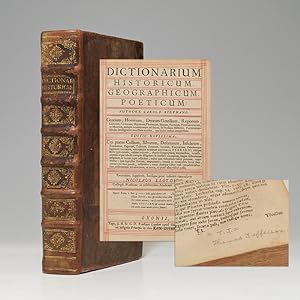
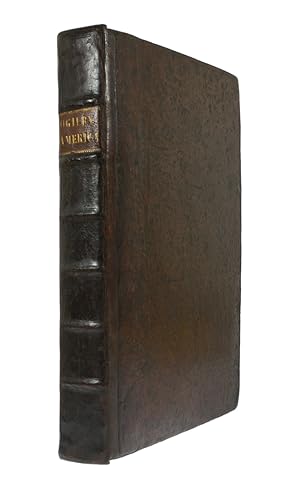
![Image du vendeur pour THE TRIUMPHS OF THE REFORMED RELIGION IN AMERICA. THE LIFE OF THE RENOWNED JOHN ELIOT . . . A MEMORABLE EVANGELIST AMONG THE INDIANS OF NEW ENGLAND. [with]. A BROADSIDE ADVERTISMENT FOR BOSTON BOOKSELLER RICHARD WILKINS mis en vente par Phillip J. Pirages Rare Books (ABAA)](https://pictures.abebooks.com/inventory/md/md31809037618.jpg)
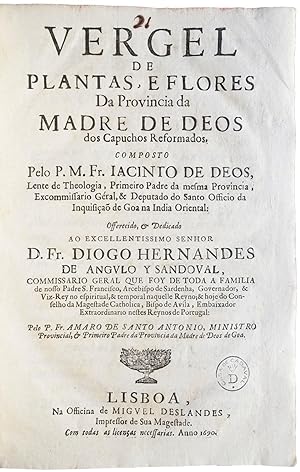


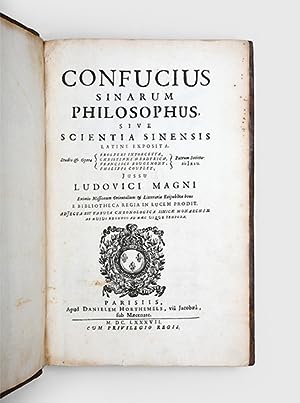
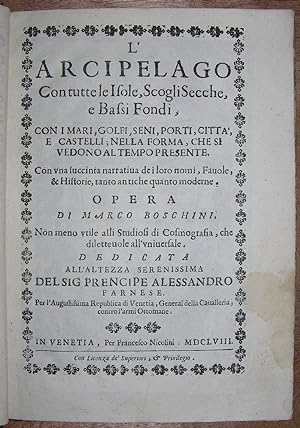


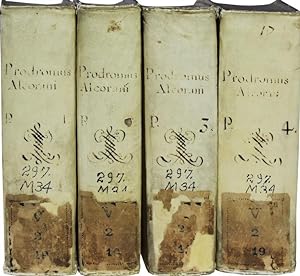
![Image du vendeur pour Le vite de' più eccellenti pittori, scultori et architetti di Giorgio Vasari, pittore & architetto aretino; parte prima e seconda [-terza] ; in questa nuoua edizione diligentemente riviste, ricorrette, accresciute d'alcuni ritratti, & arricchite di postille nel margine mis en vente par Liber Antiquus Early Books & Manuscripts](https://pictures.abebooks.com/inventory/md/md31059277350.jpg)
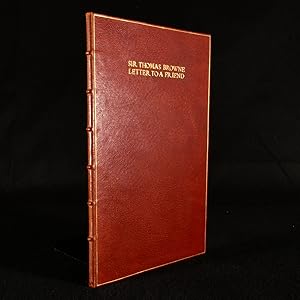
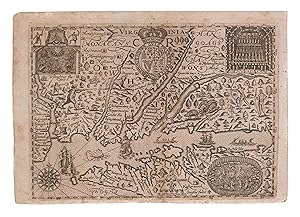
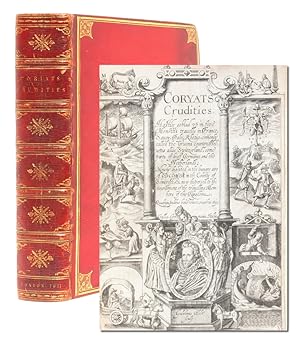
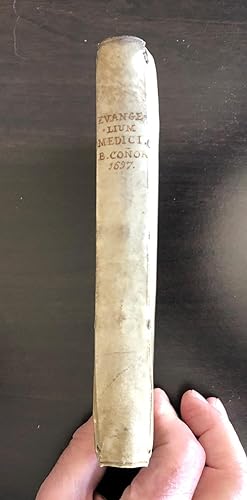
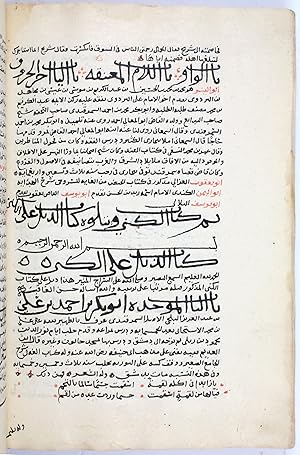
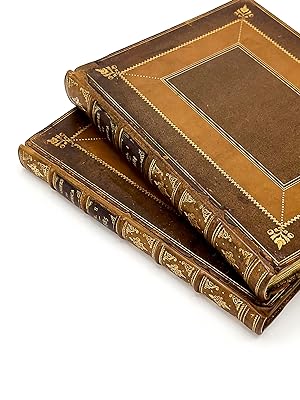
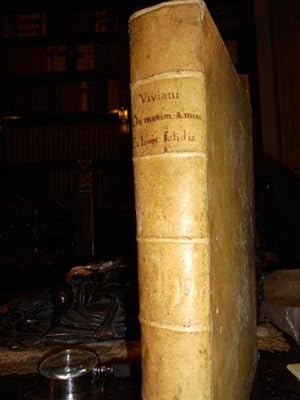
![Image du vendeur pour Thomae Hobbes Angli Malmesburiensis philosophi vita. [Bound with 3 other works by him.] mis en vente par Peter Harrington. ABA/ ILAB.](https://pictures.abebooks.com/inventory/md/md31207214481.jpg)
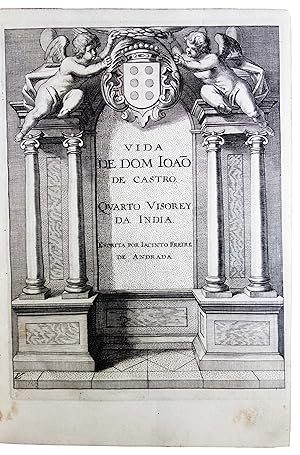
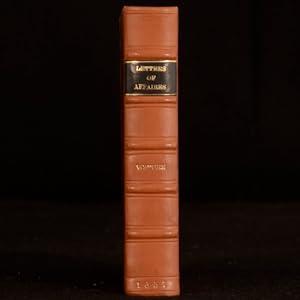
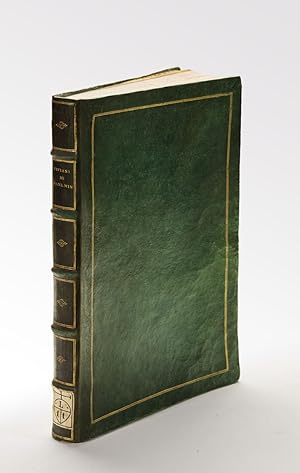
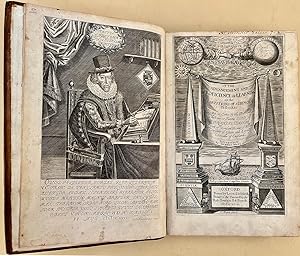

![Image du vendeur pour The Works of our ancient, learned, [and] excellent English poet, Jeffrey Chaucer: as they have lately been compar'd with the best manuscripts; and several things added, never before in print. To which is adjoyn'd, The story of the siege of Thebes, by John Lidgate, monk of Bury. Together with the life of Chaucer, shewing his countrey, parentage, education, marriage, children, revenues, service, reward, friends, books, death. Also a table, wherein the old and obscure words in Chaucer are explained, and such words (which are many) that either are, by nature or derivation, Arabick, Greek, Latine, Italian, French, Dutch, or Saxon, mark'd with particular notes for the better understanding their original mis en vente par Liber Antiquus Early Books & Manuscripts](https://pictures.abebooks.com/inventory/md/md31747765731.jpg)